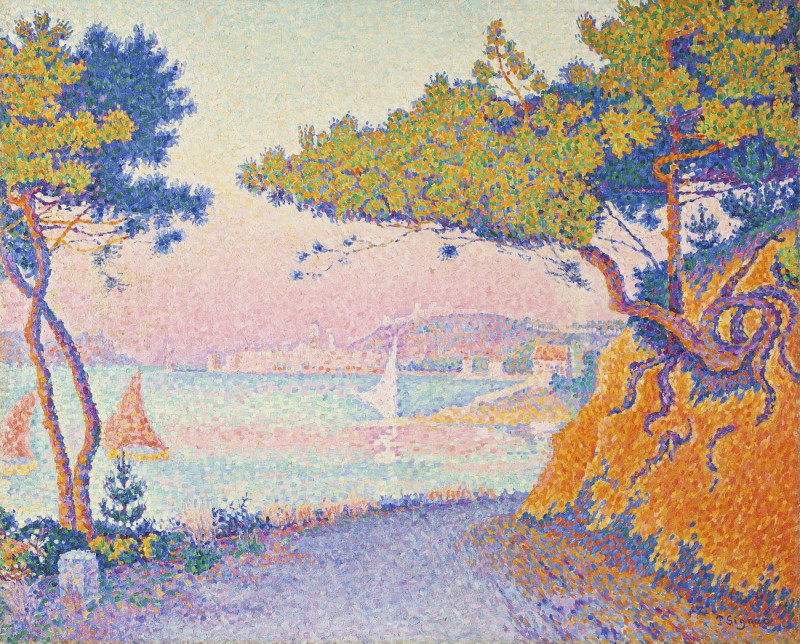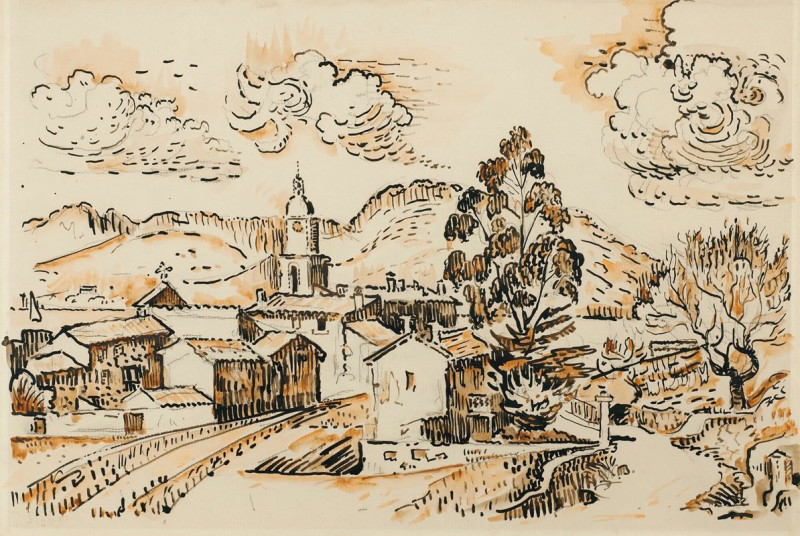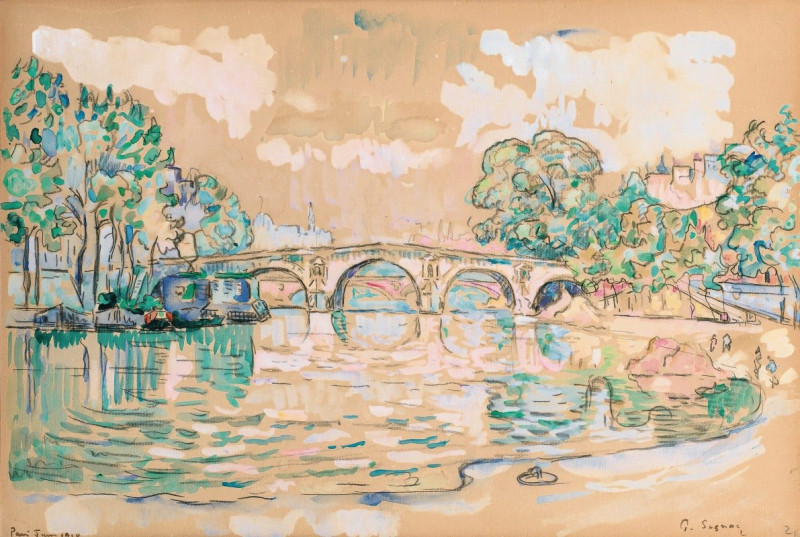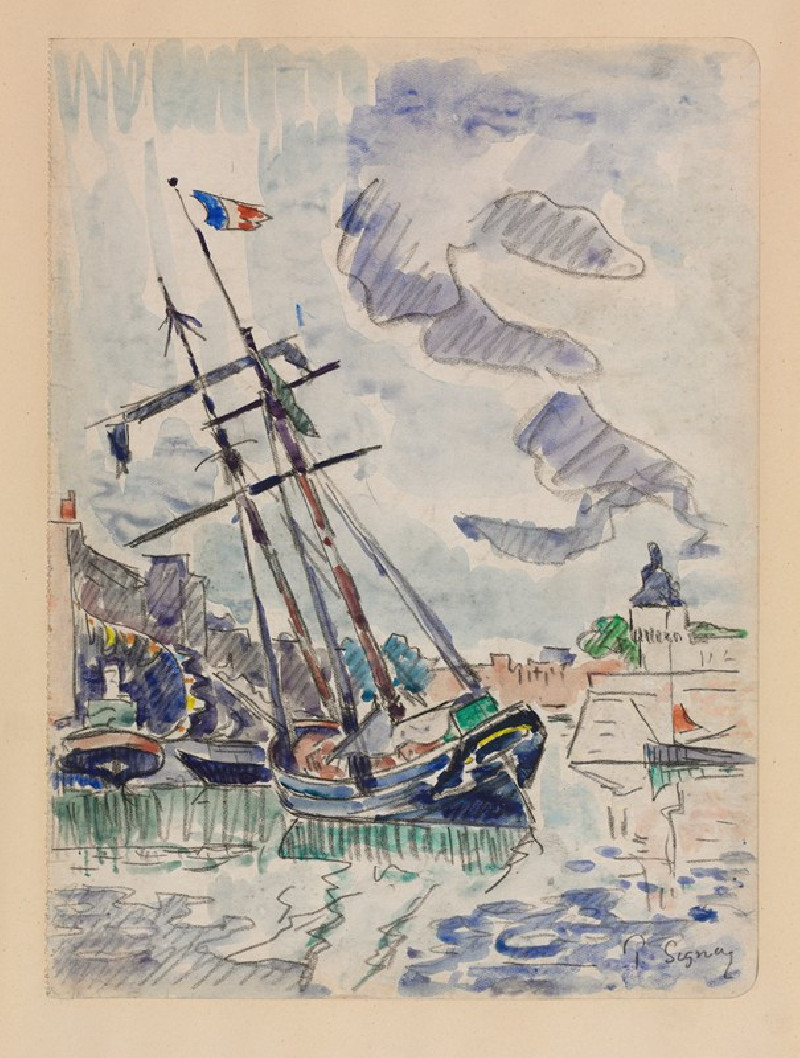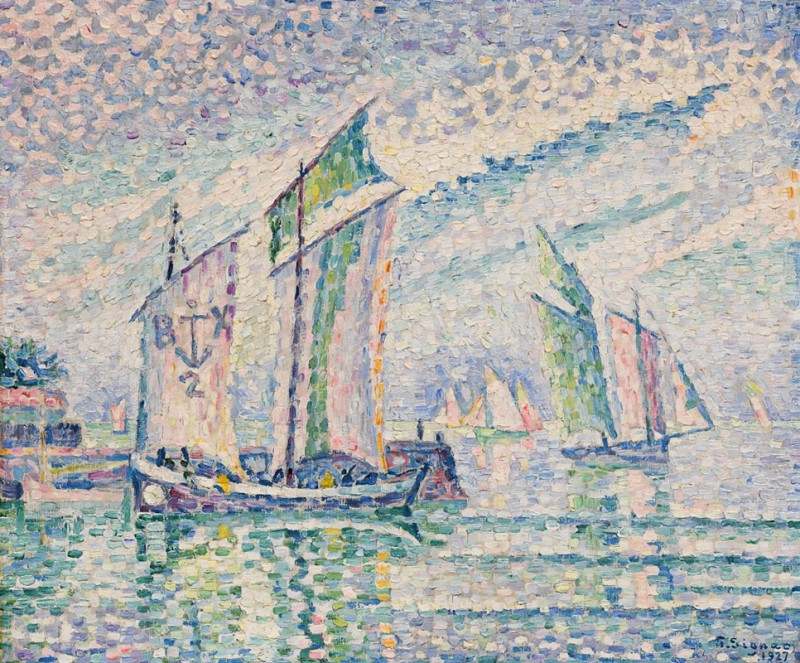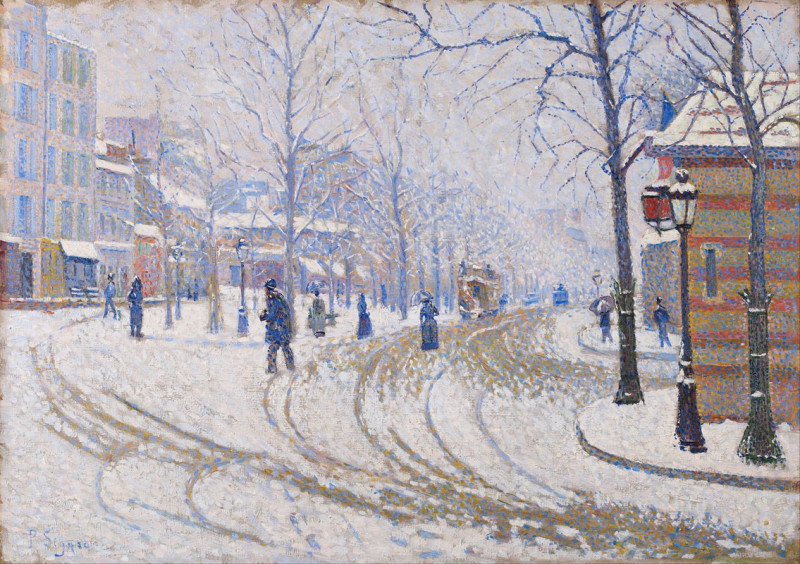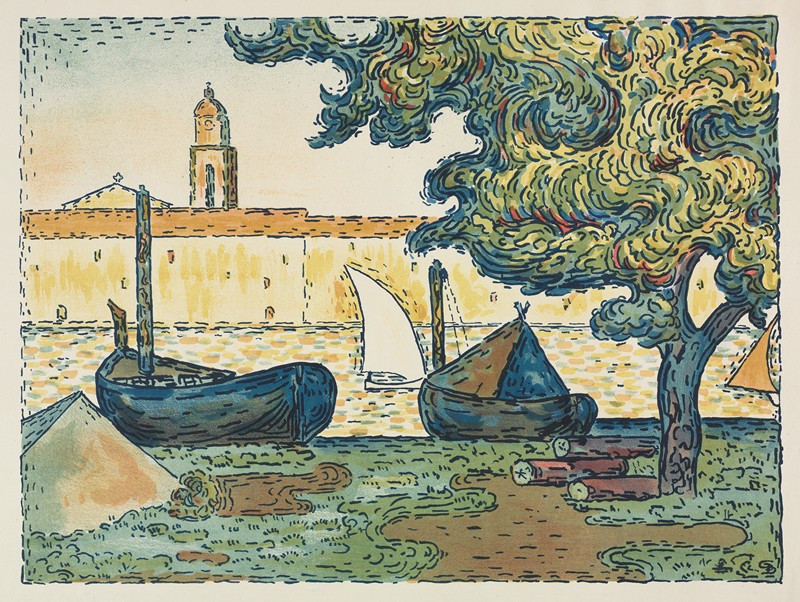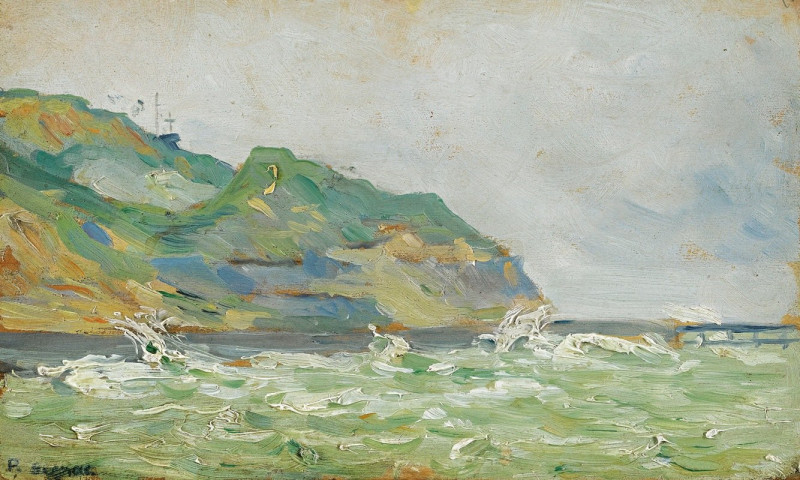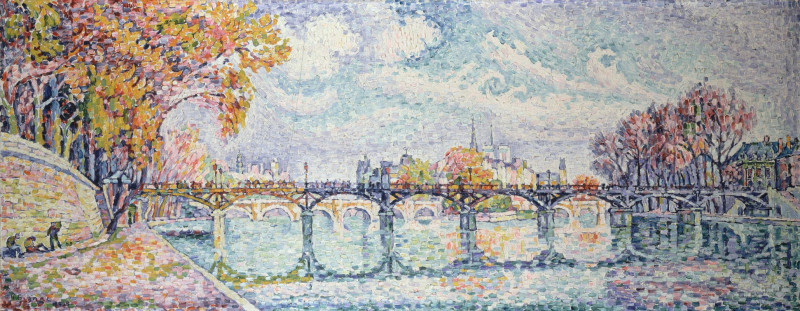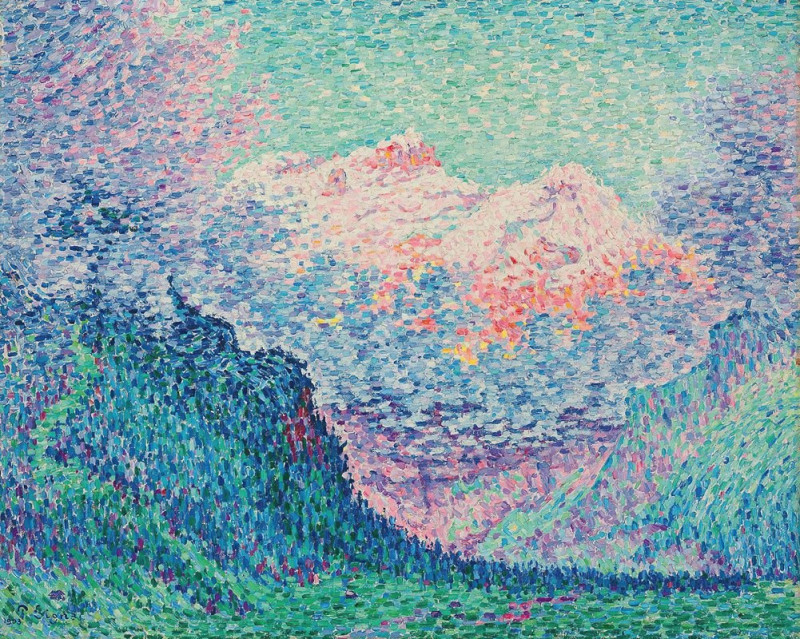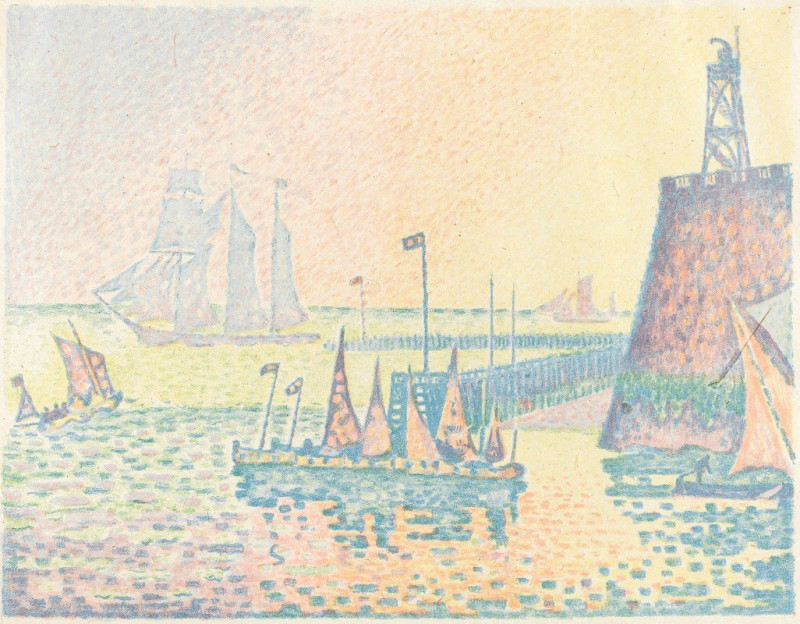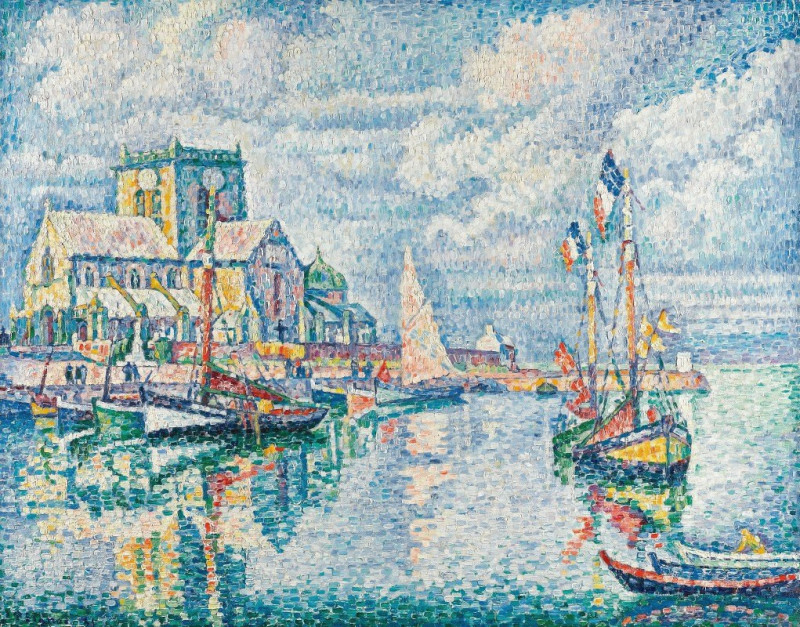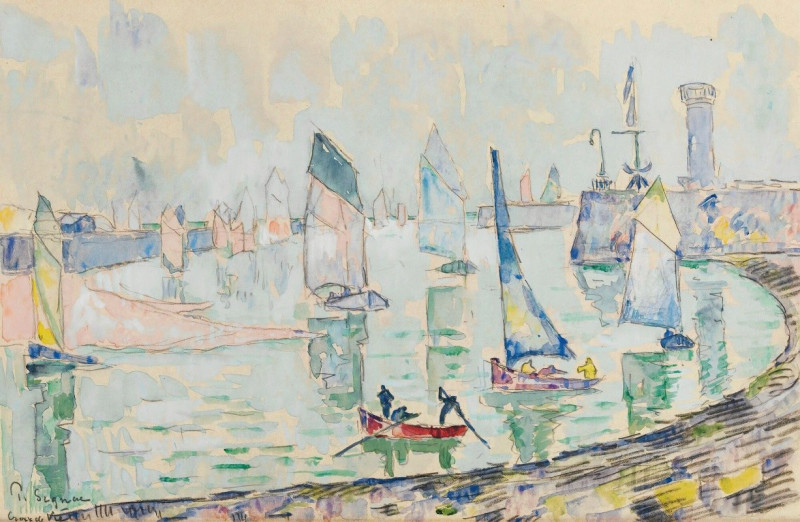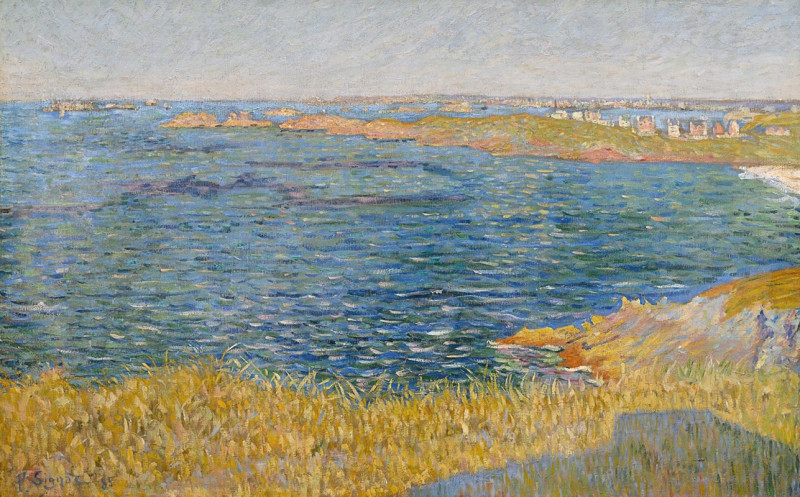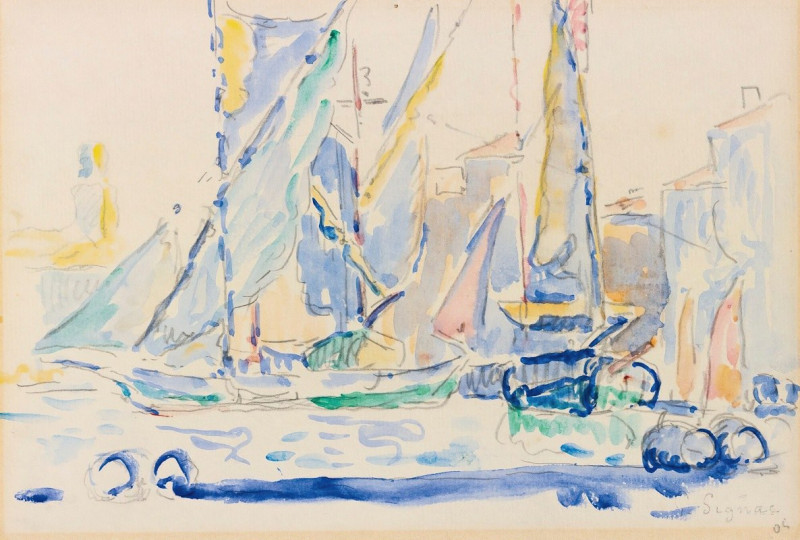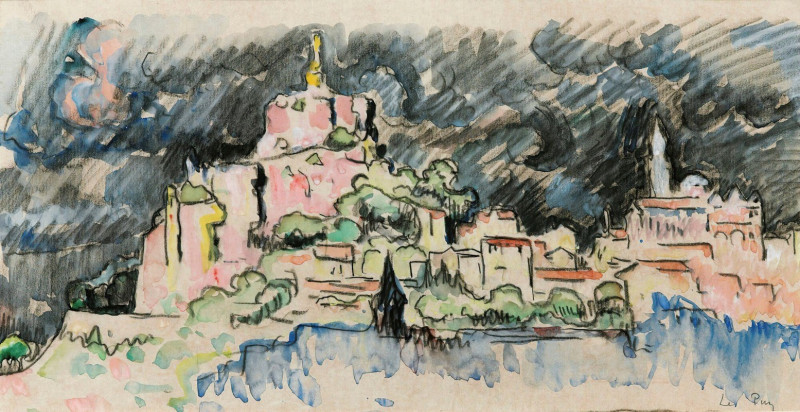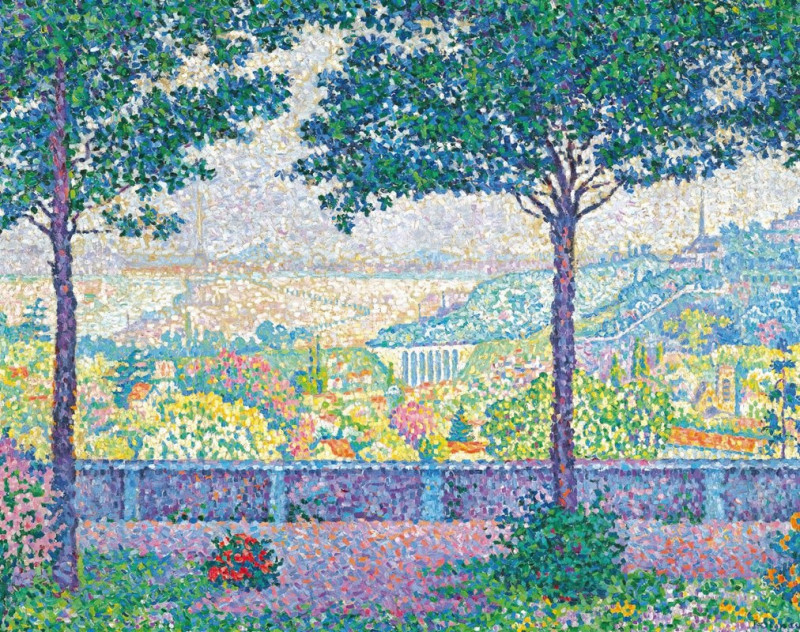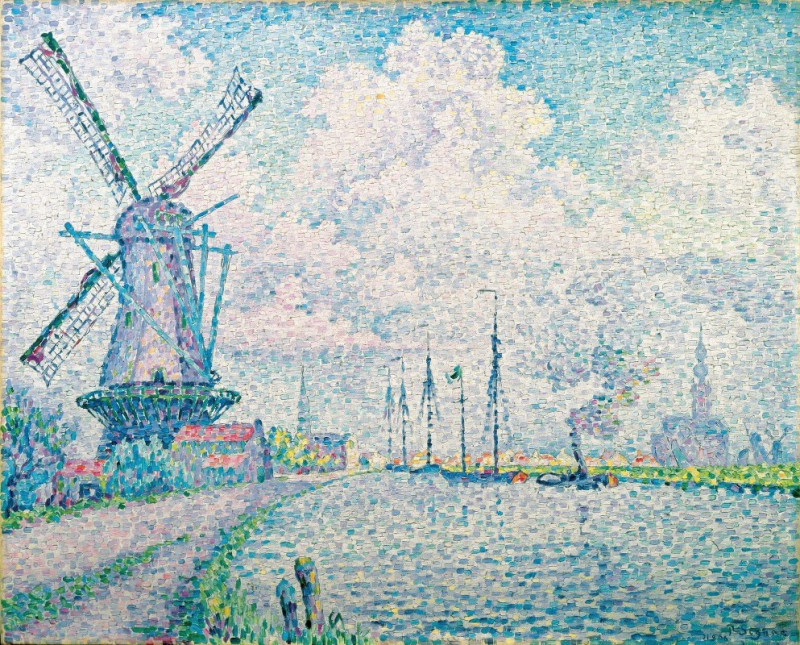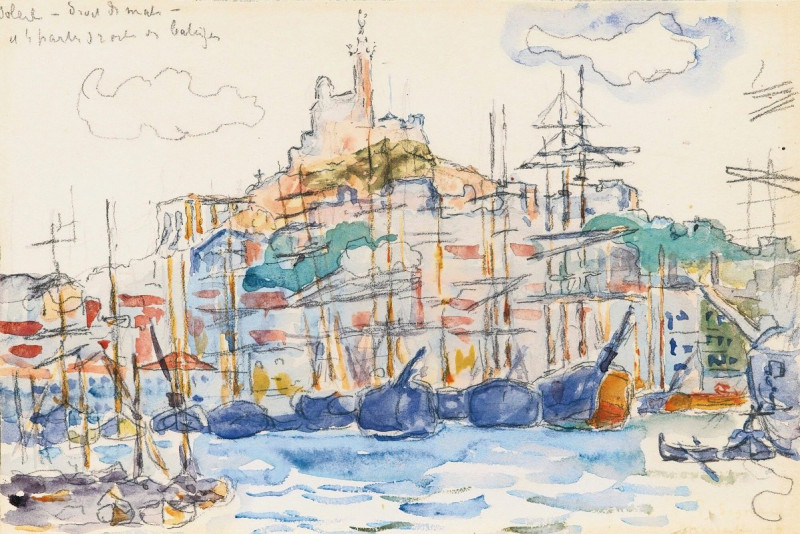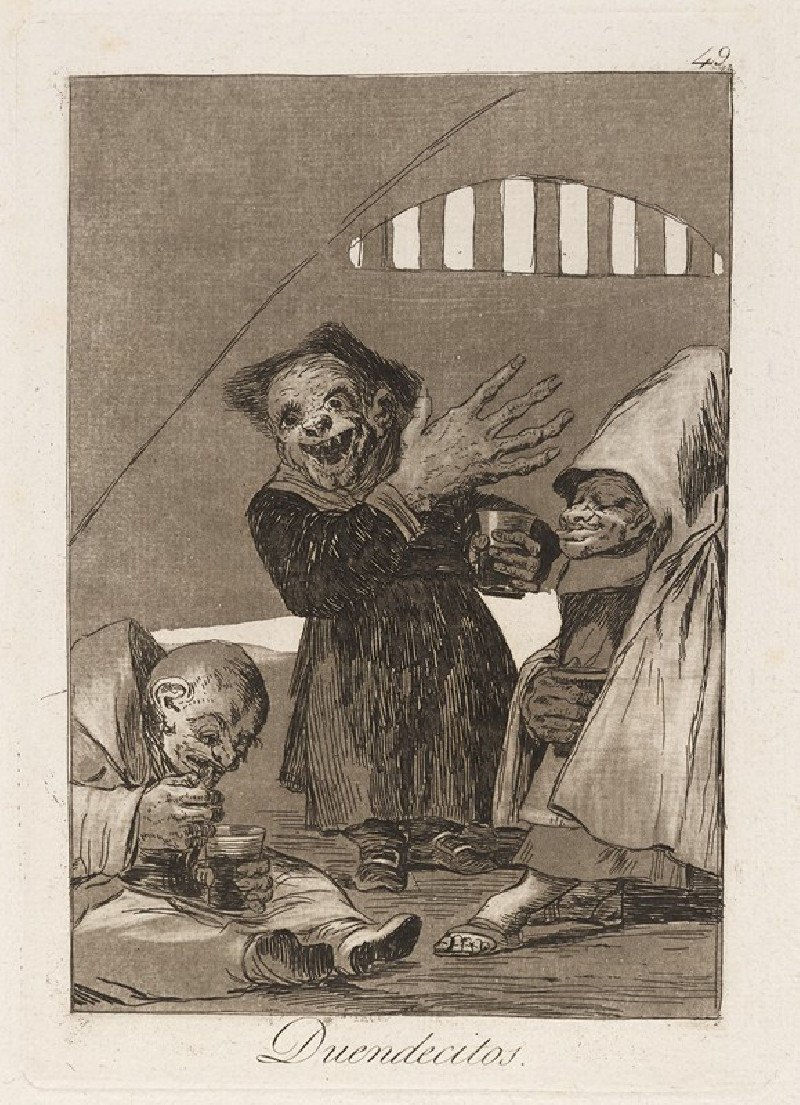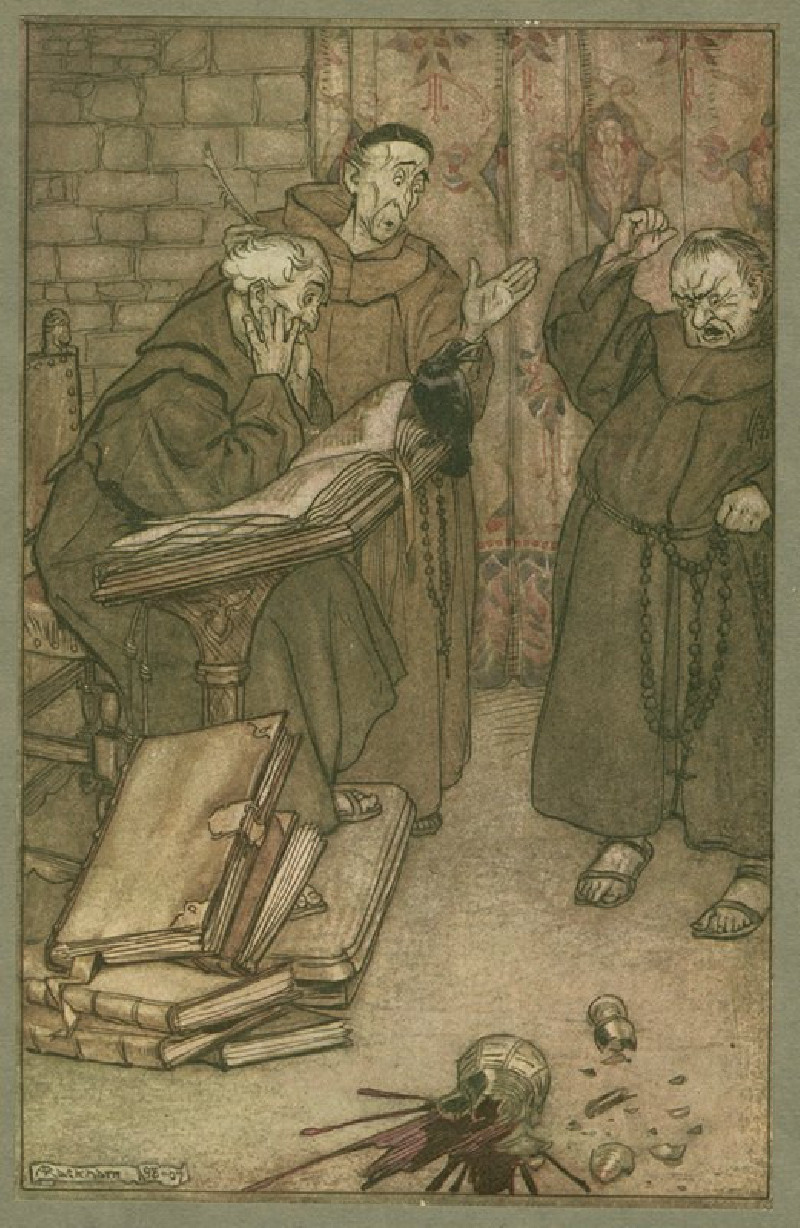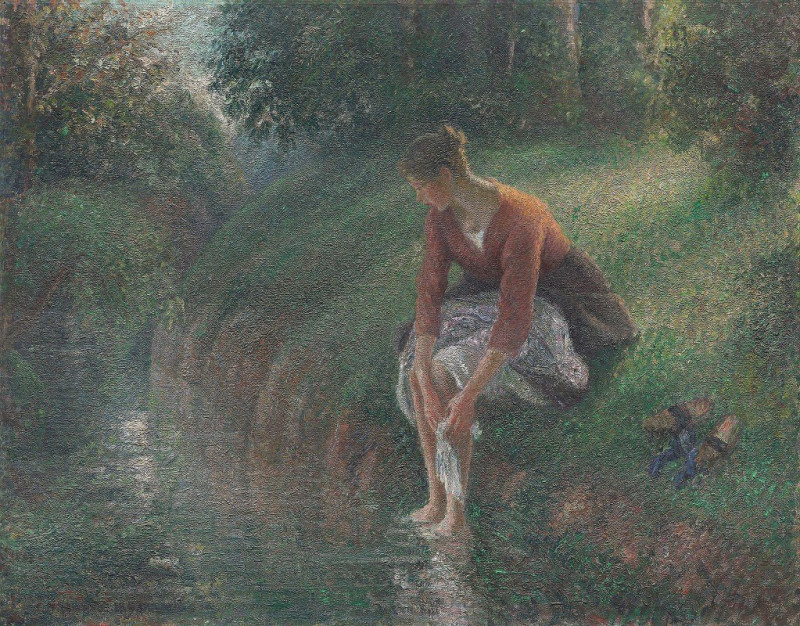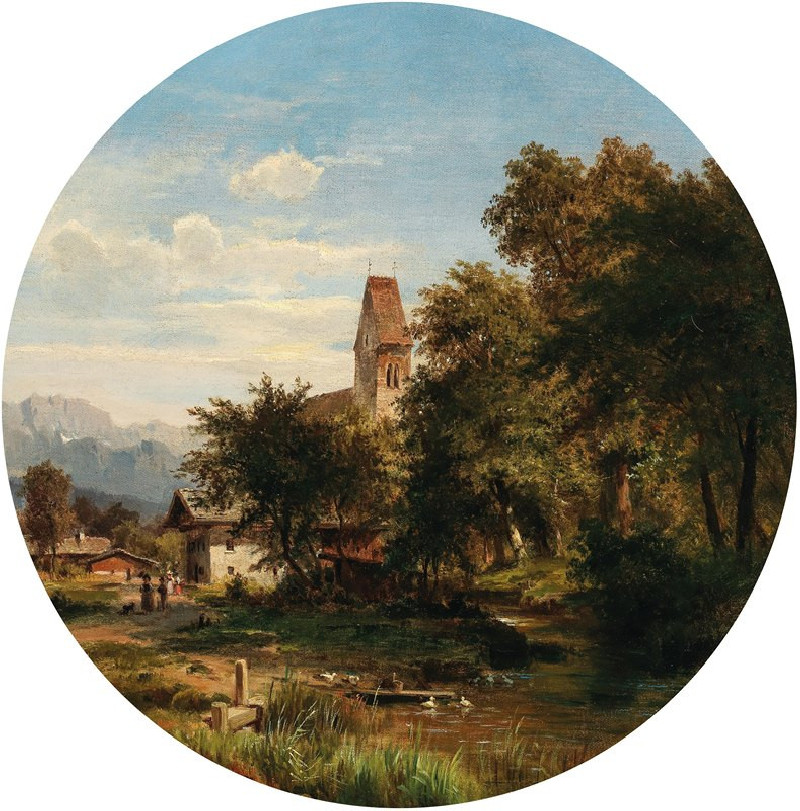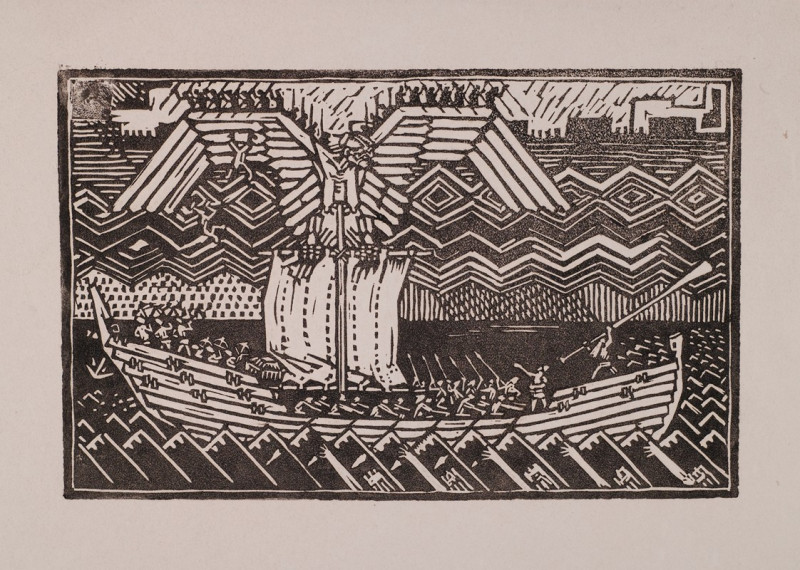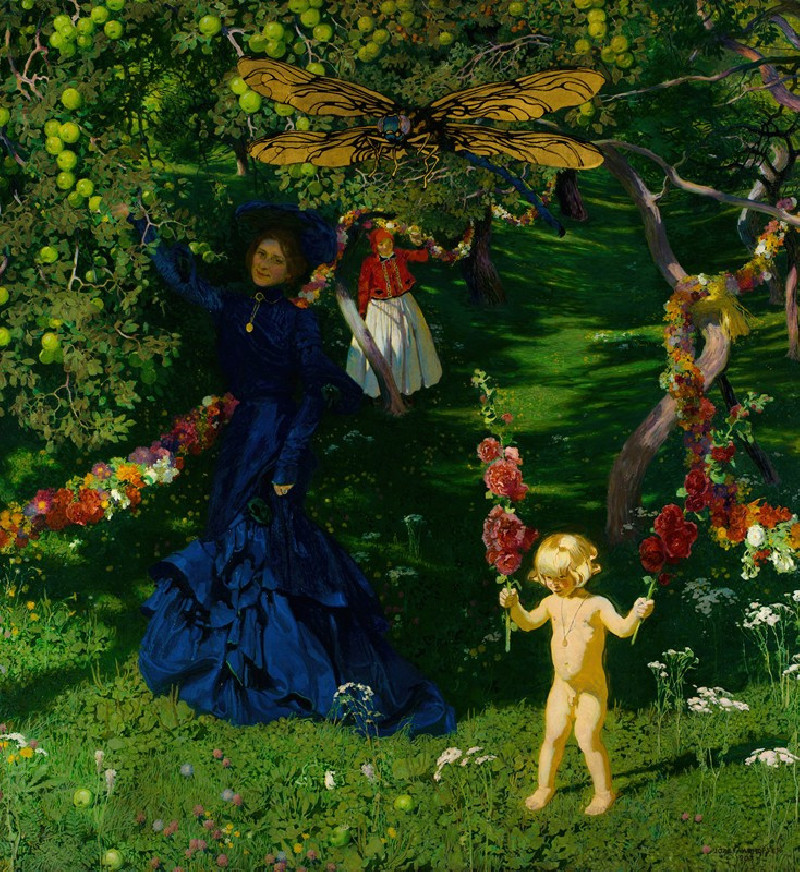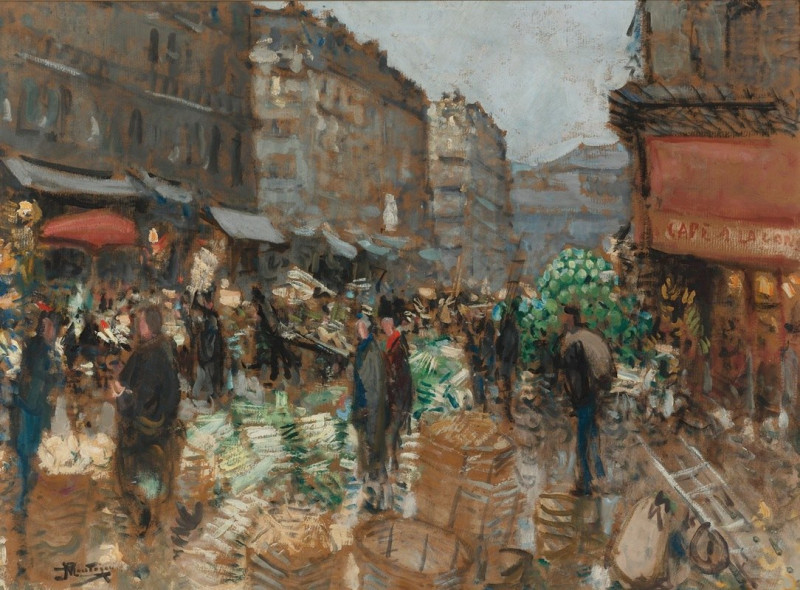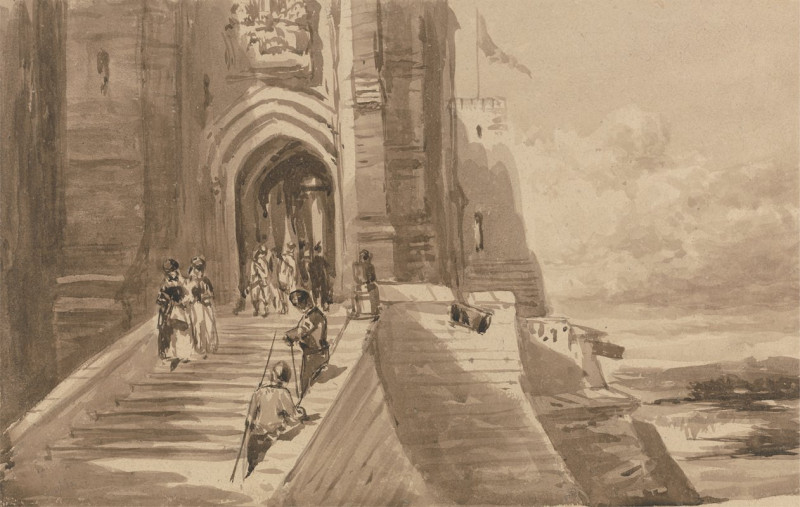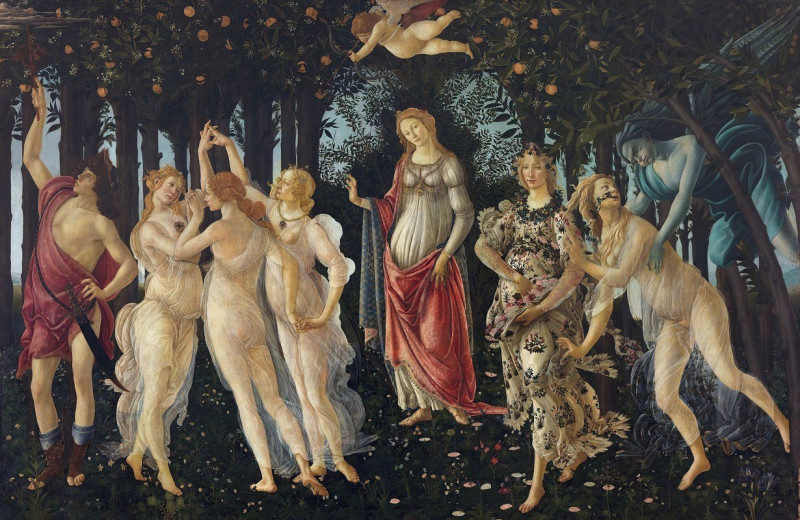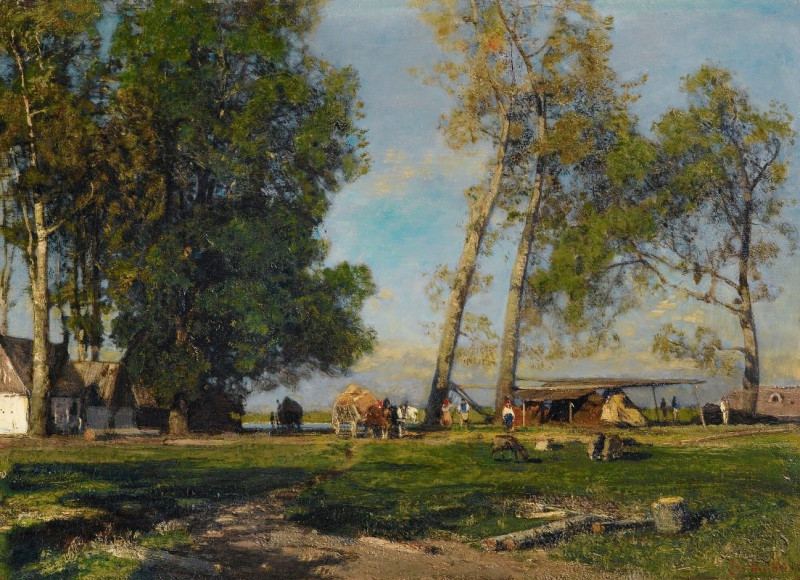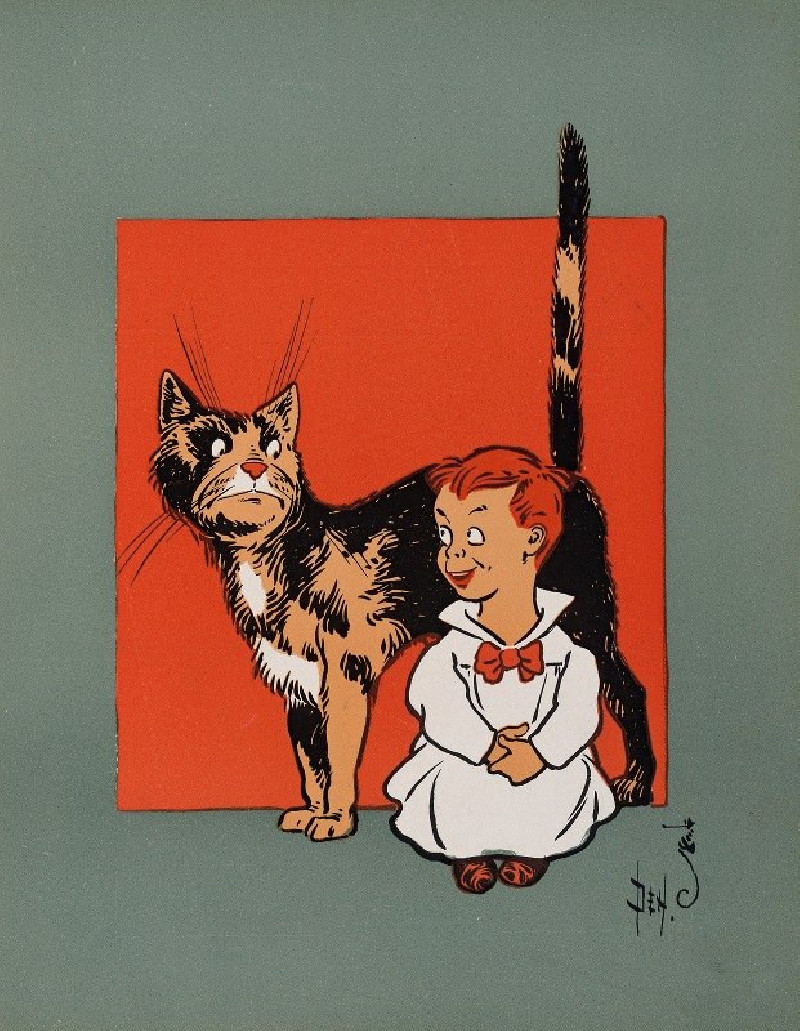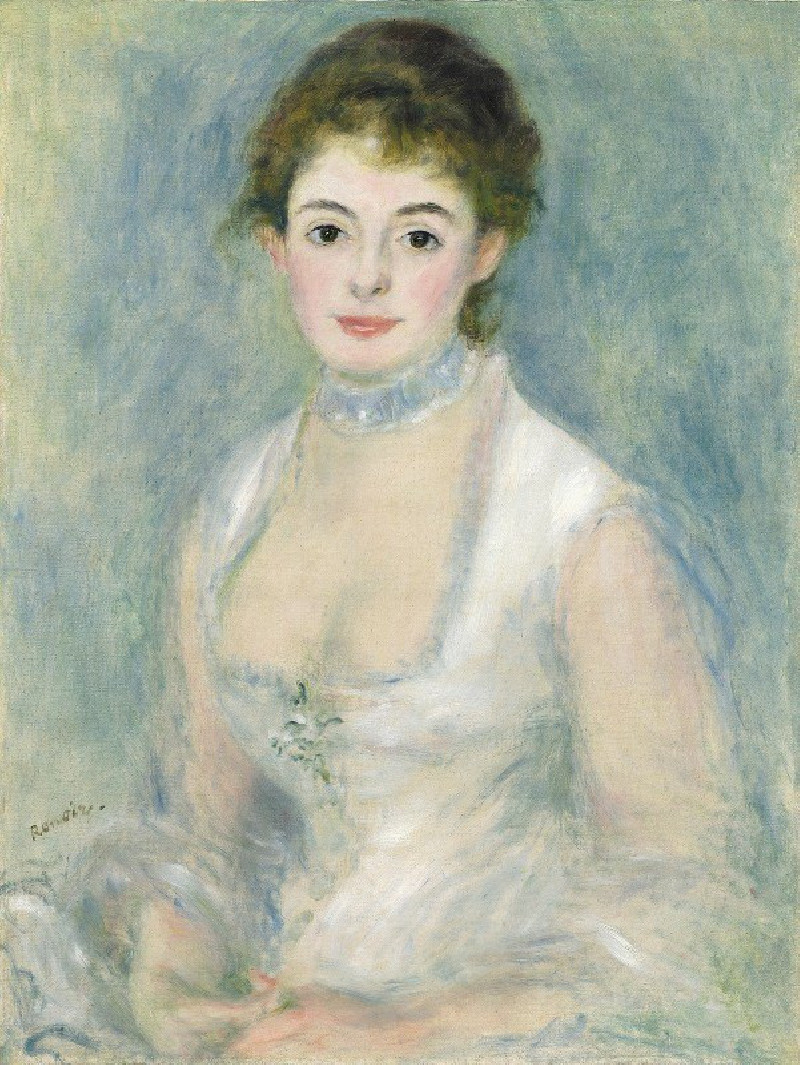Golfe Juan
Technique: Giclée quality print
Recommended by our customers
More about this artwork
The painting "Golfe Juan" by Paul Signac beautifully captures a scenic view of a coastal landscape in the characteristic style of Pointillism, a technique that uses small distinct dots of color to create an image. In this vibrant artwork, we see a richly textured and colorful representation of a seaside vista.The foreground is dominated by vigorous, twisted trees that frame the scene, their foliage depicted in varied shades of green, yellow, and blue, emphasizing the play of light and shadow. This contrasts strikingly with the warm orange and yellow hues of the path and the adjacent grassy area, suggesting the warmth of the sun.Beyond the trees, the expanse of the sea stretches across the middle portion of the painting, rendered in peaceful hues of pale blue and soft lavender, with gentle gradations that suggest the calm water surface. Small sailboats pepper the water, their sails barely distinguishable in the distance but adding a sense of life and movement to the serene bay.The sky above mirrors the tranquility of the sea, with subtle variations of pink, blue, and white, suggesting a soft, diffuse light, possibly of early morning or late afternoon.Overall, Signac's "Golfe Juan" is a testament to the beauty of the Mediterranean coast, encapsulated through a delicate balance of color and form that reflects both the natural beauty of the landscape and the innovative techniques of the Pointillist movement.
Delivery
Returns
Paul Signac (1863-1935) was a French Neo-Impressionist painter. Together with Georges Seurat, Signac developed the Pointillism style. He was a passionate sailor, bringing back watercolor sketches of ports and nature from his travels, then turning them into large studio canvases with mosaic-like squares of color. He abandoned the short brushstrokes and intuitive dabs of color of the impressionists for a more exact scientific approach to applying dots with the intention to combine and blend not on the canvas, but in the viewer's eye.

